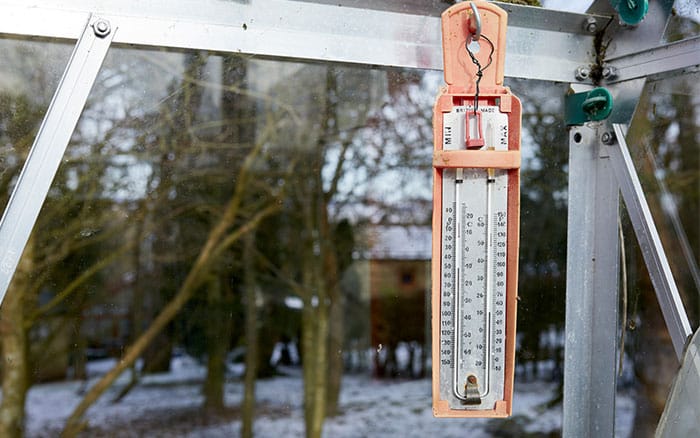If you’re lucky enough to have a greenhouse, June is a good month to put in place measures to protect plants growing in there (and you!) suffering from the effects of excessive heat.
Find out how to help the interior stay cool and well-ventilated during the summer and early autumn months.
How to ventilate your greenhouse
Ventilation is hugely important. This not only helps prevent plants from drying out quickly but also to prevent build-up of potential pests and diseases. These include red spider mites and powdery mildew.
Internal temperatures reaching 27°C/81°F and above can result in damage to plants. Therefore, be on the lookout for warning signs, such as parts of the plant wilting and/or scorched leaves. And also consider buying a maximum-minimum thermometer to monitor temperatures.


The easiest way to achieve ventilation is simply to open all windows, vents and doors on sunny days. You can leave these open overnight if temperatures remain high, as air circulating across leaves helps cool the plant down.
Relatively inexpensive and easy-to-fit automated ventilation kits are available to open the vents for you when you’re not around. These kits don’t need electricity or batteries as they’re powered and triggered by heat expansion and cooling.
If it’s not feasible to fit an automated ventilation kit, then keep windows partially open 24 hours a day. Keep doors open too, unless cold spells are forecast. The idea is to try to have air circulating throughout the greenhouse, front and back where possible, plus the sides.
How to provide shade in your greenhouse
Although opening doors, windows and vents helps release heat, it often doesn’t release enough. This is why additional help in the form of shading is needed.
The trick with shading is to allow as much light in as possible whilst minimising excess heat. Particularly, if growing edible crops in the greenhouse, such as aubergines and tomatoes.
The three main ways of achieving shade are with blinds, netting and/or shade paint.
Blinds can be external or internal. External is very effective at cooling down the interior. This is because they prevent sun rays from passing through the glass. Plus, they can be easily pulled up on cooler days to allow more light to reach the plants.
Internal blinds are cheaper than external ones but not so effective as heat coolers. This is because they allow sunlight into the greenhouse which in turn creates heat.

Shade netting can be fitted externally and/or internally. It’s a cheaper option than blinds and, like blinds, external netting is the most effective option. However, netting is easier to fix in place internally than externally.
Shade paint works by reflecting light away from the greenhouse reducing internal temperatures. It should ideally be painted onto the outside of greenhouse glass in the spring and washed off come early autumn. More layers of shade paint can be applied as the weather warms up.
Ensure your greenhouse is summer-ready to provide the healthiest environment for your plants to grow.

Leave A Comment